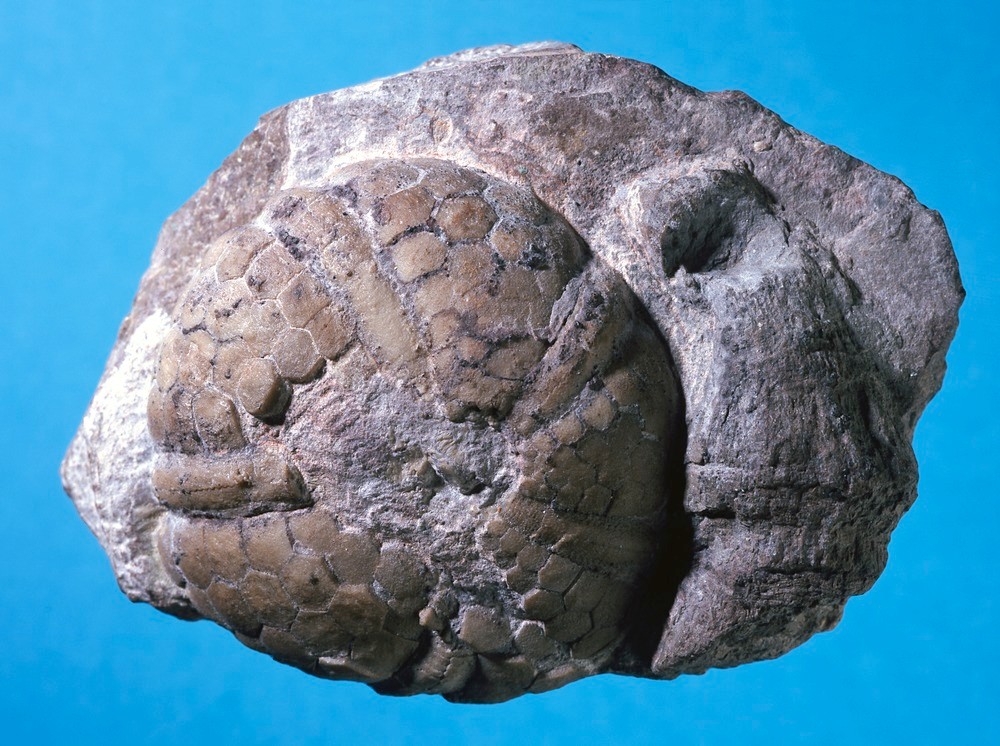| P number: | P550264 |
|---|---|
| Caption: | Lovenechinus, a fossil echinoid. |
| Description: | The plates from which the tests of the oldest echinoids are made are only weakly attached, so that they break up quickly on death. Where burial has been rapid, they remain in place. Lovenechinus lived during early Carboniferous times and has been found in many places in Europe, North America and Asia. Lovenechinus has a rounded test made up of many plates. The star-like ambulacra that radiate out from the top of the test are made up of four columns of plates, two columns of wide plates and two columns of narrow plates. Echinoids (sea urchins) have lived in marine habitats since the Ordovician times, about 450 million years ago. They still live today, inhabiting many shallow, near shore seas around the world. As fossil echinoids resemble living species, we have an idea how they must have lived. They had spines which are used for protection. Some species protected themselves from carnivores by having poison-tipped spines while others had large, unpalatable solid spines. Echinoids burrowed into the sand or crawled over the sea floor on their tubed feet, which extended from the paired pores on the star-like or petal-like areas (the ambulacra). They grazed and scavenging algae and plants or ate small particles in the sandy substrate. |
| Photographer: | Unknown |
| Copyright statement: | Unknown |
| Orientation: | Landscape |
| Size: | 480.36 KB; 1000 x 746 pixels; 85 x 63 mm (print at 300 DPI); 265 x 197 mm (screen at 96 DPI); |
| Average Rating: | Not yet rated |
| Categories: | Best of BGS Images/ Fossils |
Reviews
There is currently no feedback

